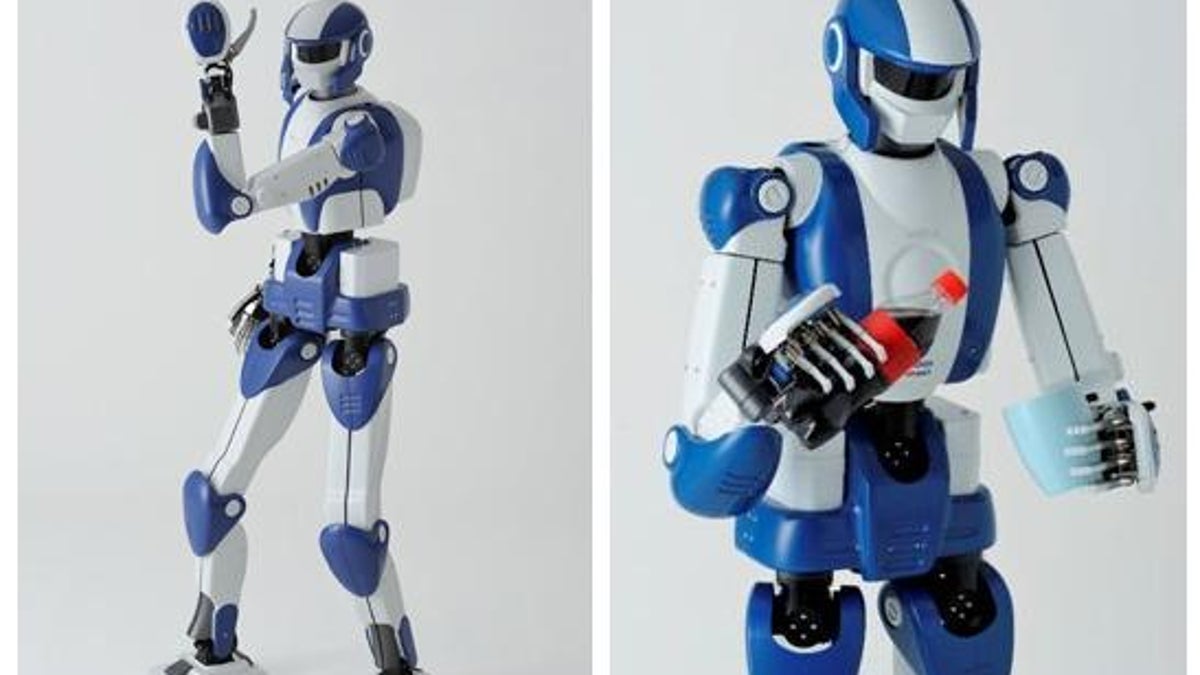HRP-4 robot can strike a pose, pour drinks
Japan is still upgrading its HRP series of humanoid servants. The latest prototype, HRP-4, can stand on one leg, strike a pose, and generally look cool.

Japan has added another soldier to its humanoid robot army following last year's fembot supermodel. The HRP-4 is the latest edition in the state-backed humanoid project. It's leaner, lighter, and can balance itself with yogic ease.
Developed by bridge builder Kawada Industries and the National Institute of Advanced Industrial Science and Technology (AIST), the HRP-4 can stand on one leg, track faces and objects, and respond to voice commands.
HRP-4 sports a RoboCop look, but it's more C-3PO. Designed under the theme of a "slim athlete," it weighs a mere 86 pounds including battery. That's about 9 pounds less than its sister bot HRP-4C, which made waves last year modeling a dress at a bridal fashion show in Osaka, as well as Japan Fashion Week in Tokyo.
HRP-4 stands nearly 5 feet tall and has 34 moving joints, with seven in each arm, as well as fingers than can move more precisely than earlier HRP models. Each arm has a load capacity of about 1 pound.
All joint motors are less than 80 watts for design safety. A compact notebook computer can be installed in HRP-4's back to increase onboard data processing.
Kawada and AIST have previously shown off how HRP bots can be useful around the house, wielding power tools and pouring drinks. The HRP-2 Promet has been shown walking on uneven terrain and even helping install wall paneling.
The video below shows HRP-4 introducing itself, showing off some moves and tracking a man's face (it stands on one leg at around 4:25).
HRP-4 is the result of over a decade of research by the public and private sector in Japan, and inherits technology originally developed by Honda. The droid will go on sale for around 26 million yen (some $300,000; software not included) starting in January. Kawada and AIST are targeting foreign and domestic research centers and universities as potential buyers.
While I doubt they'll find many, I'm glad to see the HRP project is moving to commercialization after vast sums in investment. My fave HRP moment to date was when it performed a charming folk dance several years ago. I hope it becomes not only entertaining, but useful.
(Via Pink Tentacle)

